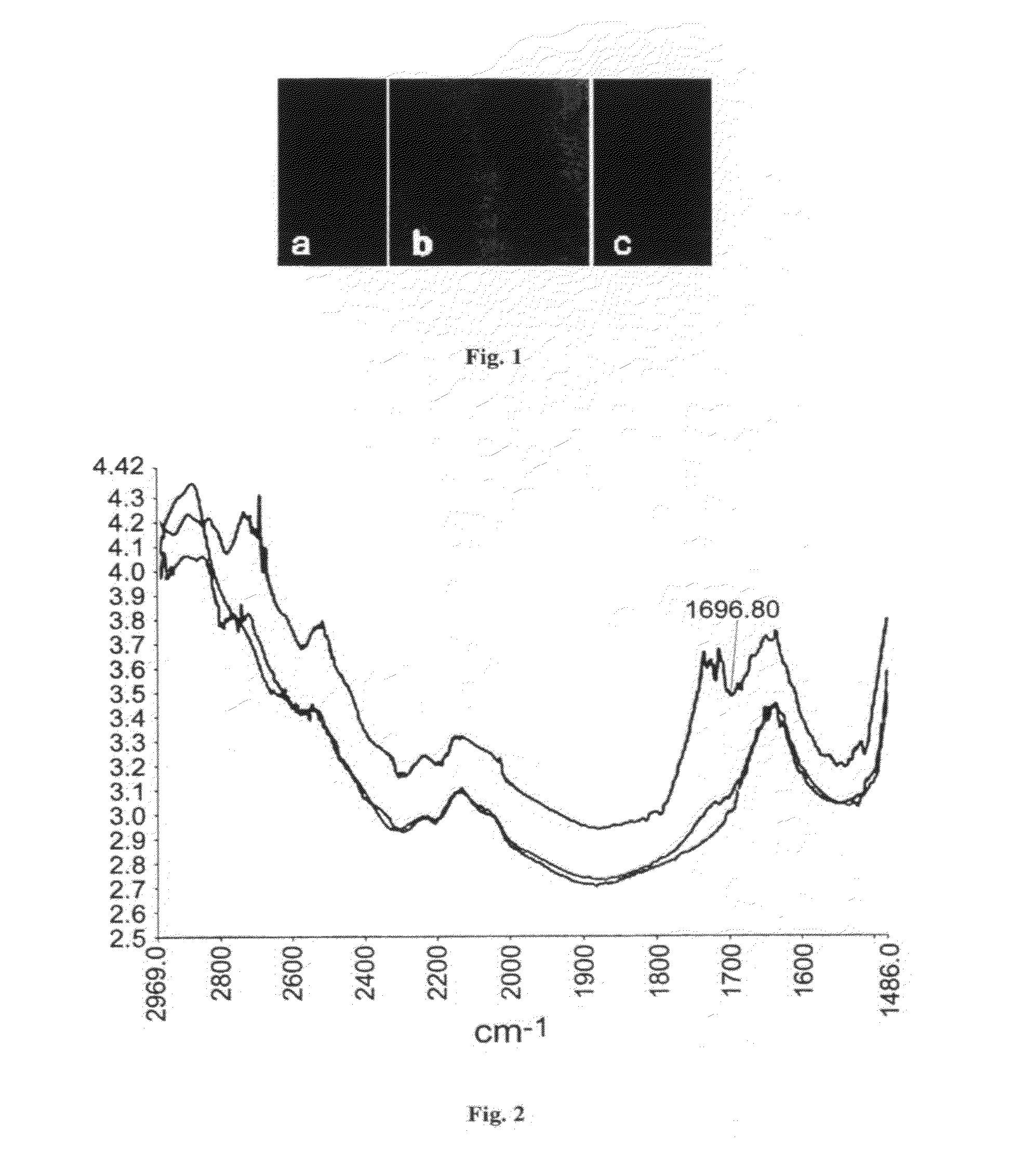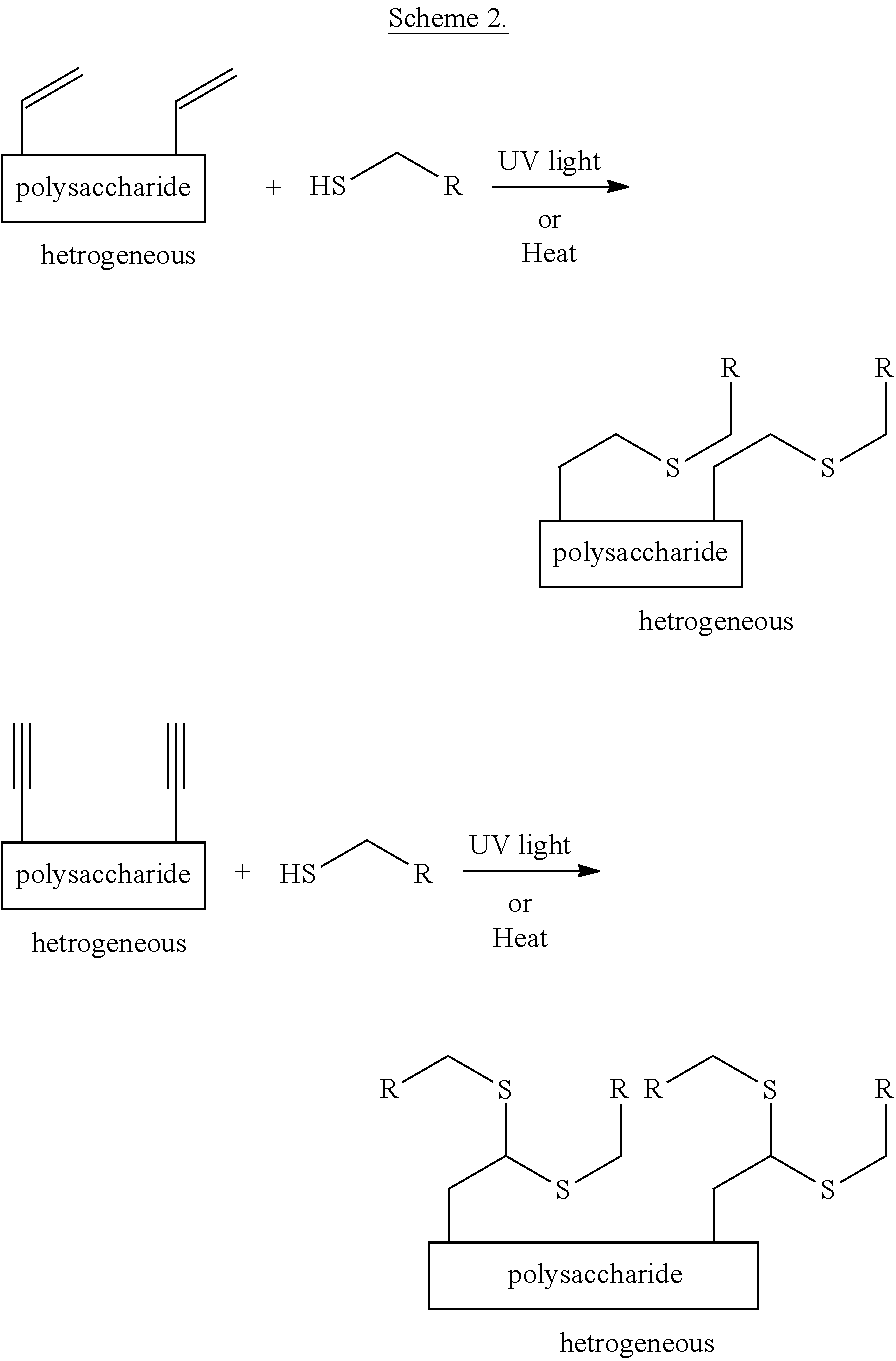Heterogeneous thiol-ene click modifications of solid polysaccharide-based materials
- Summary
- Abstract
- Description
- Claims
- Application Information
AI Technical Summary
Problems solved by technology
Method used
Image
Examples
example 1
[0035]The filter paper (around 30 mg) was dipped into a mixture of 9-decenoic acid (1 g) and
[0036](S)-tartaric acid (5 mol %). Then the reaction was heated to 110° C. and kept for 8 hours. After that, the filter paper was taken out and extracted by soxhlet. After drying the modified filter paper 2a (Scheme 3) was obtained.
example 2
[0037]The filter paper (around 30 mg) was dipped into a mixture of hex-5-ynoic acid (1 g) and (S)-tartaric acid (5 mol %). Then the reaction was heated to 110° C. and kept for 8 hours. After that, the filter paper was taken out and extracted by soxhlet. After drying the modified filter paper 2b was obtained.
example 3
[0038]The filter paper (around 30 mg) was dipped into a mixture of 2-(oct-7-enyl)oxirane (1 g) and (S)-tartaric acid (5 mol %). Then the reaction was heated to 110° C. and kept for 1 hour. After that, the filter paper was taken out and extracted by soxhlet. After drying the modified filter paper 2c (Scheme 3) was obtained.
PUM
| Property | Measurement | Unit |
|---|---|---|
| size | aaaaa | aaaaa |
| particle size | aaaaa | aaaaa |
| fluorescent | aaaaa | aaaaa |
Abstract
Description
Claims
Application Information
 Login to View More
Login to View More - R&D
- Intellectual Property
- Life Sciences
- Materials
- Tech Scout
- Unparalleled Data Quality
- Higher Quality Content
- 60% Fewer Hallucinations
Browse by: Latest US Patents, China's latest patents, Technical Efficacy Thesaurus, Application Domain, Technology Topic, Popular Technical Reports.
© 2025 PatSnap. All rights reserved.Legal|Privacy policy|Modern Slavery Act Transparency Statement|Sitemap|About US| Contact US: help@patsnap.com



